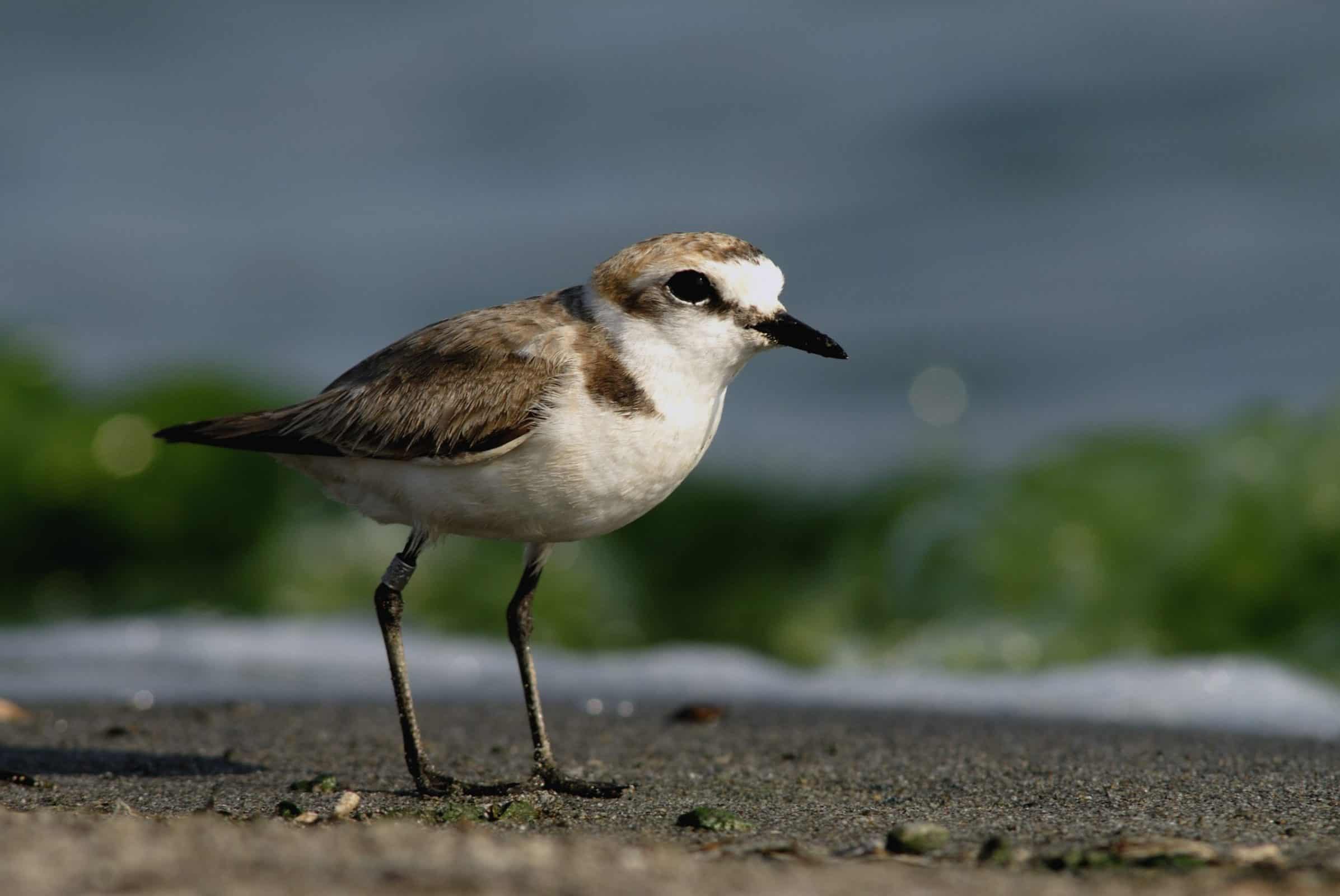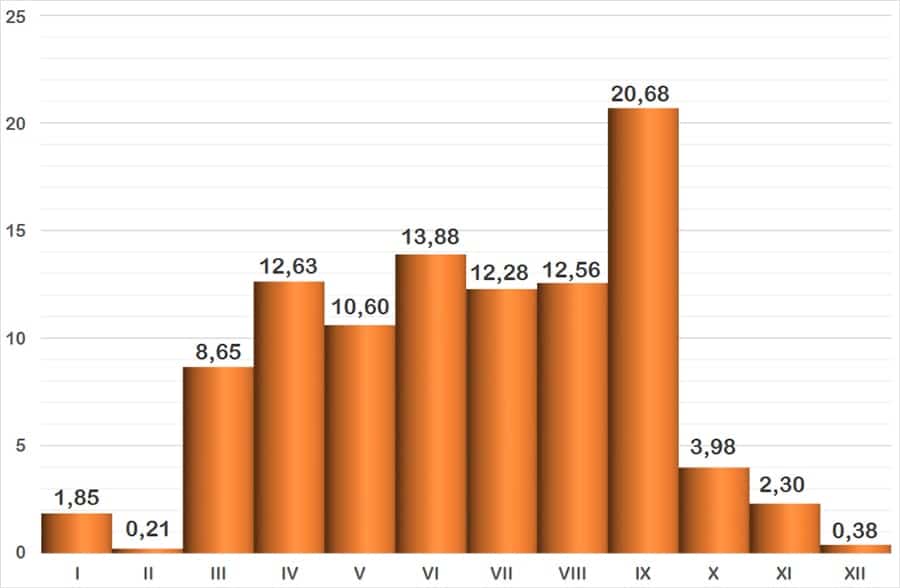This is the medium-sized one among the three common plovers. As its name indicates, it is the only one with dark, black legs. Its back gives it a sandy appearance. The bill is dark, thin and relatively small compared to the other plovers, from which it differs also in that the collar is open on the breast. The male has a brown hood and a black eye-ring which is the same colour as the back in the case of the female.

Species 1
Kentish Plover
Scientific name
Family 2
Taxonomic Affinity Group 3
Phenology 4
It is a resident species in Spain, with wintering and mainly breeding populations. In our wetlands, it can be seen throughout the year, mainly during the spring and summer, in these months although with fluctuations account for the most sightings. It is most likely to be seen during the postnuptial migration, with the movements of young birds. Up to one-fifth of the individuals recorded annually are seen in September.

The graph represents the probability of seeing a species during the year, grouped into months. The vertical axis indicates the percentage value. Each of the bars expresses its value. The horizontal axis represents the months: I = January, II = February, III = March, IV = April, V = May, VI = June, VII = July, VIII = August, IX = September, X = October, XI = November and XII = December.
Observation recommendations
It is easily observed in the Cerrillos area, especially feeding on the banks of the small shallow ponds. When the ‘Salinas Nuevas’ dries up in summer, it becomes a good place to see this bird that was selected in 2019 “bird of the year” by SEO/BirdLife, the leading NGO for ornithology.
Observation areas where we can find it
Notes
[1] The names used are from the list of birds of Spain, drawn up by SEO/BirdLife and updated to 2019 (https://seo.org/listaavesdeespana/). The reference is: Rouco, M., Copete, J. L., De Juana, E., Gil-Velasco, M., Lorenzo, J. A., Martín, M., Milá, B., Molina, B. & Santos, D. M. 2019. Checklist of the birds of Spain. 2019 edition. SEO/BirdLife. Madrid.
[2] The taxonomic family to which it belongs is indicated.
[3] Traditionally, waterbirds have been grouped according to their taxonomy or “taxonomic affinity”, i.e., when some birds coincide in certain features that allow them to be classified scientifically, but without leaving the rigour of science, they are put together in these groups so that they can be easily recognised. These groups are the following: Greves (belonging to the Podicipedae family), Herons and Similar (includes the families: Ardeidae -Herons- Ciconiidae -Storks- and Threskiornithidae -Ibises and spoonbills-), Ducks (the whole Anatidae family), Coots and Similar (the family Rallidae corresponding to Rails, Gallinules and Coots), Cranes (also with only one family, the Gruidae), Waders , a heterogeneous group, the most diverse of this classification, includes the families Burhinidae (Stone-curlews), Haematopodidae (Oystercather), Recurvirostridade (Avocets and Stilts), Glareolidae (Pranticole), Charadriidadea (Plovers), Scolapacidae and finally Gulls and Similar (the recently unified family Laridae, i.e. Gulls and Terns).
[4] Phenology studies the relationship between the cycles of living beings and meteorological factors, and in our latitude these factors manifest themselves as variations throughout the year, thus relating the seasons to the birds’ cycles (breeding, migratory journeys, etc.) The graph shows the probability of seeing a bird depending on the month. It uses data from 48 bird censuses carried out between October 2016 and September 2018. The method used is that of a census route with sampling stations, with a total count on the sheet of water.
